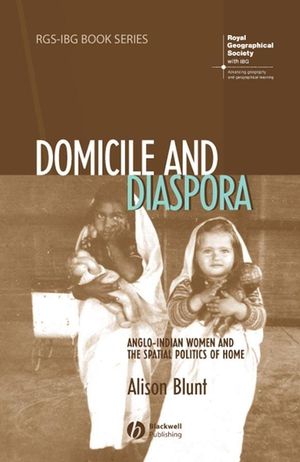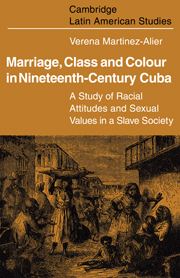Negotiating Honor: Women and Slavery in Caracas, 1750-1854
University of New Mexico, Albuquerque
May 2011
214 pages
Sue E. Taylor
A Dissertation Submitted in Partial Fulfillment of the Requirements for the Degree of Doctor of Philosophy in History
This study examines three interrelated groups—female slaves, female slave owners, and free women of African heritage—living in the city and state of Caracas, Venezuela from the middle of the eighteenth through the middle of the nineteenth centuries in order to improve our historical understanding of gender and slavery. Venezuela represented the largest and longest lasting slave-owning regime in Spanish South America. Slavery, as a system of labor, was an integral part of colonial Venezuelan society and affected all segments of the populace. Understanding gender relations within slavery is crucial to understanding the dynamics of gender, power, race, and sexuality in the society as a whole. Women of Spanish, African, and mixed descent were involved in and affected by slavery.
Each group of women had a concept of what honor meant for them and each sought to preserve honor by demanding fair and humane treatment, to be treated with respect and dignity, and to protect their reputations. They also expected those people who had control over them to behave with honor. Sometimes honor, as seen in the cases and as demanded by slave and free black women, corresponded to traditional concepts of honor as birthright as defined by elite members of society and other times not. In other examples, women of color used honor along the lines of Stewart’s concept of honor as the entitlement of treatment as a worthwhile person. By looking beyond honor as birthright, the women in my study also invoked honor in their expectation that they be treated with dignity and respect and be able to preserve their reputations in society and with their peers. Slave owners, on the other hand, were sensitive to accusations of being overly harsh in their treatment of their human possessions. Their good reputation required both paternalism and firm control. Slave litigants tested the boundaries of appropriate coercion and restraint in their suits against abusive or unreasonable slave owners. They also showed a sophisticated understanding of legal codes and institutions.
Table of Contents
- List of Tables
- Introduction
- Honor, women, and slavery
- Historiography
- Literature on gender and slave women
- Literature on Honor
- Honor in Latin America
- Methodology and Sources
- Organization of Chapters
- Part I: Redefining Honor
- Chapter 2: Mistreatment as an indicator of dishonor
- Protecting honor through the court
- Conclusion
- Chapter 3: Redefining Sexual Honor: Broken Promises and Respectable Work
- Broken Promises
- Respectable Work and Honor
- Conclusion
- Part II: The slave family
- Chapter 4: Slave and free black families as seen through Church documentation
- The Parish of San Pablo
- Marriage
- Baptisms
- Matriculas
- Chapter 5: Preserving the Family
- Children and Childhood
- Enslaved Children: Achieving Freedom
- The death of an owner
- Marriage and Honor
- Families and use of the law
- Part III: Slavery, freedom, and emancipation in the post-independence Liberal State
- Chapter 6: Slavery and Independence
- Venezuela moves toward revolution
- The Junta de Secuestros
- Revolution, slaves, and free blacks
- Slavery in the republic of Venezuela
- Freedom in the post-independence state
- Conclusion
- Chapter 7: Conclusion
- Bibliography
List of Tables
- Table 1: Slave and Free Black Marriages, San Pablo Parish
- Table 2: Slave Marriages
- Table 3: Free Black and slave/manumiso baptisms by year
- Table 4: Slave and Manumiso Baptisms
- Table 5: Slave and manumiso baptisms 1752-1852 by gender and status
- Table 6: Godparents
- Table 7: Heads of Household by race & marital status
- Table 8: Single heads of household
- Table 9: Slave Ownership
- Table 10: Slave Distribution
- Table 11: Slave Statistics
- Table 12: Overview of San Pablo Parish
Chapter 1: Introduction
Venezuela represented the largest and longest lasting slave-owning regime in Spanish South America. Slavery, as a system of labor, was an integral part of colonial Venezuelan society and affected all segments of the populace. Understanding gender relations within slavery is crucial to understanding the dynamics of gender, power, race, and sexuality in the society as a whole. Women of Spanish, African, and mixed descent were involved in and affected by slavery.
My study examines three interrelated groups—female slaves, female slave owners, and free women of African heritage—living in the city and state of Caracas, Venezuela from the middle of the eighteenth through the middle of the nineteenth centuries in order to improve our historical understanding of gender and slavery. This study aids in our understanding of gender and power relations within late colonial Venezuela and beyond, and will contribute to our knowledge of slavery in Latin America more broadly. The intersection of power, gender, race, and sexuality is especially important to this study. By power, I mean the socially sanctioned coercion of one category of person over another that permitted domination of masters over slaves, men over women, etc. Gender refers to socially constructed assumptions regarding behaviors, values, and societal roles assigned to men and women; it serves as a lens through which we can study the experiences and actions of historical actors. How power was mediated between masters and slaves and men and women, including female slave owners is a central concern of this study…
…Winthrop Wright’s monograph on race and class in Venezuela studies the changes in racial attitudes from the colonial period through the first half of the twentieth-century. Wright argues that the cash crop economy and resultant labor arrangements determined the nature of Venezuela’s colonial two-tiered society. The nature of colonial society in Venezuela—relatively under-populated, rural, at the fringe of the empire, with a majority of the population of African descent – mandated racial mixing, according to Wright. However, because miscegenation did not break down the barriers between the elite and the lower classes, race became a “systemic factor in the division of colonial society into distinct castes.” This colonial order persisted until black and mixed race troops were included in the independence movement.
A useful gender study that transcends race and class boundaries is Verena Stolcke’s (Martinez-Alier) 1974 monograph, Marriage, Class and Colour in Nineteenth-Century Cuba. She uses marriage, specifically deviations from the norm, as a lens to assess nineteenth-century Cuban society. Stolcke examines cases of parents opposed to their child’s marriage, cases of elopement, and instances of interracial marriage, arguing that these deviations not only highlight conflicts within the system, but more importantly, make the norms even more apparent. This book deals specifically with interracial marriage within a slave-owning society. The fact that a large portion of the Cuban population were slaves, ex-slaves, or descendants of slaves is crucial to her argument. Her work raises important issues to colonial Cuban society and gender that are applicable to my case.
Finally, my study examines free African and mixed-race women living during the era of slavery to discover how their lives, occupations, opportunities, religious practices, and family relationships may have differed from those of their enslaved counterparts. Because slavery continued to expand in Venezuela through the end of the eighteenth century, the free population of color was sizeable, numbering nearly 200,000 free people of color, or forty-six percent of the population, by the end of the century…
Read the entire dissertation here.

